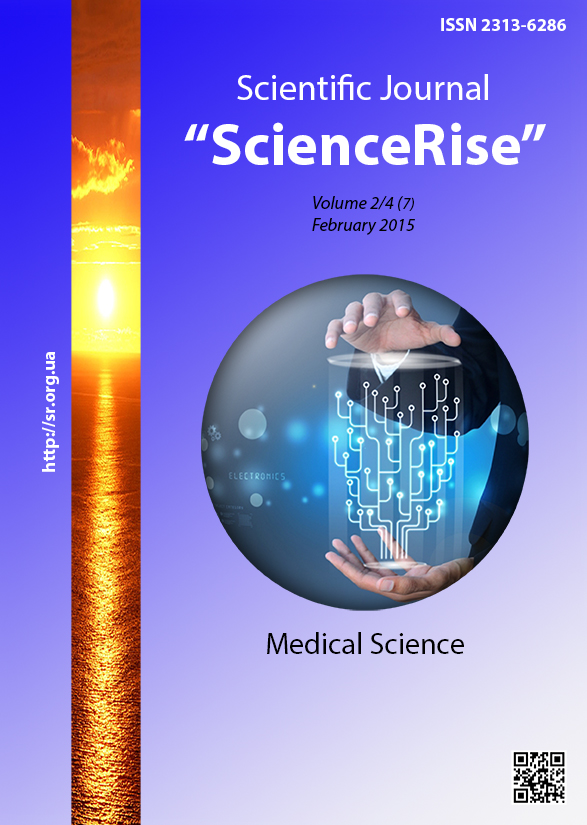Преимущества Clean & POROUS TM нового технологического метода обработки поверхности дентальных имплантатов
DOI:
https://doi.org/10.15587/2313-8416.2015.38096Ключевые слова:
методы SLA и RBM, имплантаты, остеоинтеграция, структурированная пористая поверхностьАннотация
В статье представлены результаты исследования на SEM и EDS поверхности имплантатов ведущих производителей, обработанных наиболее широко распространенными методами SLA и RBM.
Указаны преимущества и недостатки этих методов. Разработанная компанией Finish Line новая технология обработки поверхности имплантатов Clean&Porous объединяет в себе преимущества поверхностей SLA и RBM методов, исключает их недостатки и дает возможность получить хорошо структурированную и абсолютно чистую поверхность, необходимую для успешной остеоинтеграции.
Библиографические ссылки
Pavlenko, A. B., Gorban', S. A., Ilyk, R. R., Shterenberg, B. (2009). Poverhnost' implanta, ejo rol' i znachenie v osteointegracii. Sovremennaja stomatologija, 4, 101–108.
Cochran, D. L., Schenk, R. K., Lussi, A., Higginbottom, F. L., Buser, D. (1998). Bone response to unloaded and loaded titanium implants with a sunblasted and acid-etched surface: a histometric study in the conine mandible. Journal of Biomedical Materials Research, 40 (2), 1–11. doi: 10.1002/(sici)1097-4636(199804)40:1<1::aid-jbm1>3.0.co;2-q
Testori, T., Wiseman, L., Woolfe, S., Porter, S. (2001). A prospective multicenter clinical study of the ossetite implants four-year interim report. Int J Oral Maxillofac Implants, 16, 193–200.
Esposito, M., Coulthard, P., Thomsen, P., Worthington, H. V. (2005). Interventions for peplacing missing teeth: different types of dental implants. Cochrone Database Sys Rev, 25, CD003815.
Taba, M., Novaes, A. B., Souza, S. L. S., Grisi, M. F. M., Palioto, D. B., Pardini, L. C. (2003). Radiographic Evaluation of Dental Implants with Different Surface Treatments: An Experimental Study in Dogs. Implant Dentistry, 12 (3), 252–258. doi: 10.1097/01.id.0000075580.55380.e5
Esposito, M., Hirsch, J.-M., Lekholm, U., Thomsen, P. (1998). Biological factors contributing to failures of osseointegrated oral implants, (I). Success criteria and epidemiology. Eur J Oral Sci, 106 (1), 527–551. doi: 10.1046/j.0909-8836..t01-2-.x
Wennerberg, A., Albrektsson, T., Andersson, B., Krol, J. J. (1995). A histomorghometric study of screw-shaped and removal torque titanium implants with three different surface topographies. Clin Oral Implants Res, 6 (1), 24–30. doi: 10.1034/j.1600-0501.1995.060103.x
Hansson, S., Norton, M. (1999). The relation between surface roughness and interfacial shear strength for bone-anchored implants. A mathematical model. Journal of Biomechanics, 32 (8), 829–836. doi: 10.1016/s0021-9290(99)00058-5
Sanz, R. A., Oyarzún, A., Farias, D., Diaz, I. (2001). Experimental Study of Bone Response to a New Surface Treatment of Endosseous Titanium Implants. Implant Dentistry, 10 (2), 126–131. doi: 10.1097/00008505-200104000-00009
Sanz, R. A., Qyarzum, A., Farias, D., Diaz, I. (2006). Experimental study of bone response to a new surface treatment of endosseous titanium implants. J. Oral. Impl., 64–67.
Odont, P. P., Odont, R. B., Odont, J. T., Pesquera, A., Odont, J. L., Nishimura, R., Nasr, H. (1997). Countertorque testing and histomorphometric analysis of various implant surfaces in canines: a pilot study. Implant Dentistry, 6 (4), 259–265. doi: 10.1097/00008505-199700640-00002
Brett, P. M., Harle, J., Salih, V., Mihoc, R., Olsen, J., Jones, F. H. et al. (2004). Roughness response genes in osteoblasts. Bone, 3 5(1), 124–133. doi: 10.1016/j.bone.2004.03.009
Kieswetter, R., Schwartz, Z., Hummert, T. W., Cochran, D. L., Simpson, J., Dean, D. D., Boyan, B. D. (1996). Surface roughness modulates the local production of growth factors and cytokines by osteolast-like MG-63 cells. Journal of Biomedical Materials Research, 32 (1), 55–63. doi: 10.1002/(sici)1097-4636(199609)32:1<55::aid-jbm7>3.0.co;2-o
Cooper, L. F. (2000). A role for surface topography in creating and maintaining bone at titanium endosseous implants. The Journal of Prosthetic Dentistry, 84 (5), 522–534. doi: 10.1067/mpr.2000.111966
Wennerberg, A., Hallgren, C., Johansson, C., Danelli, S. (1998). A histomorphometric evaluation of screw-shaped implants each prepared with two surface roughnesses. Clin Oral Implants Res, 9 (1), 11–19. doi: 10.1034/j.1600-0501.1998.090102.x
Загрузки
Опубликован
Выпуск
Раздел
Лицензия
Copyright (c) 2015 Лев Ильич Винников, Филипп Захарович Савранский, Роман Вячеславович Симахов, Петр Олегович Гришин

Это произведение доступно по лицензии Creative Commons «Attribution» («Атрибуция») 4.0 Всемирная.
Наше издание использует положения об авторских правах Creative Commons CC BY для журналов открытого доступа.
Авторы, которые публикуются в этом журнале, соглашаются со следующими условиями:
1. Авторы оставляют за собой право на авторство своей работы и передают журналу право первой публикации этой работы на условиях лицензии Creative Commons CC BY, которая позволяет другим лицам свободно распространять опубликованную работу с обязательной ссылкой на авторов оригинальной работы и первую публикацию работы в этом журнале.
2. Авторы имеют право заключать самостоятельные дополнительные соглашения, которые касаются неэксклюзивного распространения работы в том виде, в котором она была опубликована этим журналом (например, размещать работу в электронном хранилище учреждения или публиковать в составе монографии), при условии сохранения ссылки на первую публикацию работы в этом журнале .

